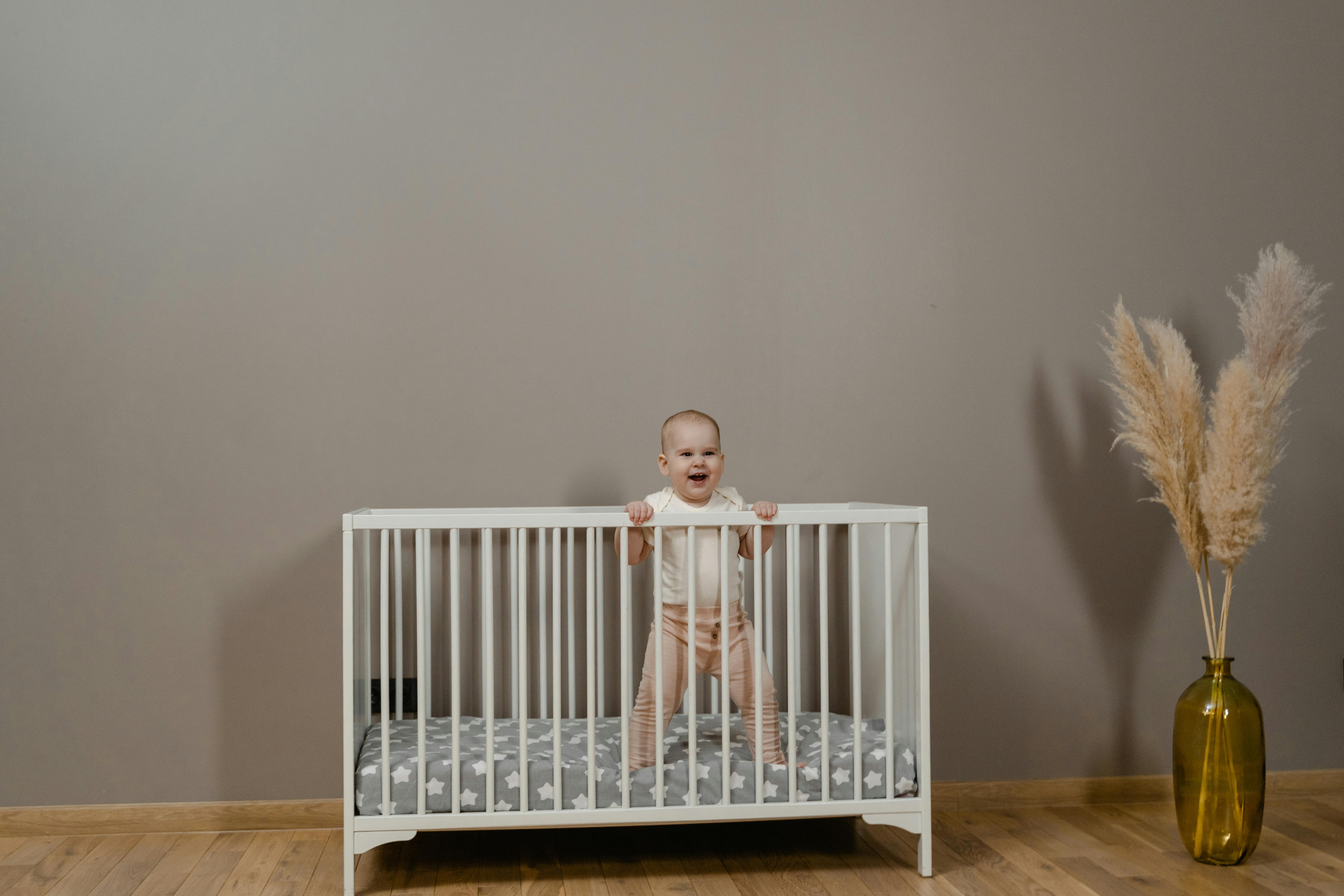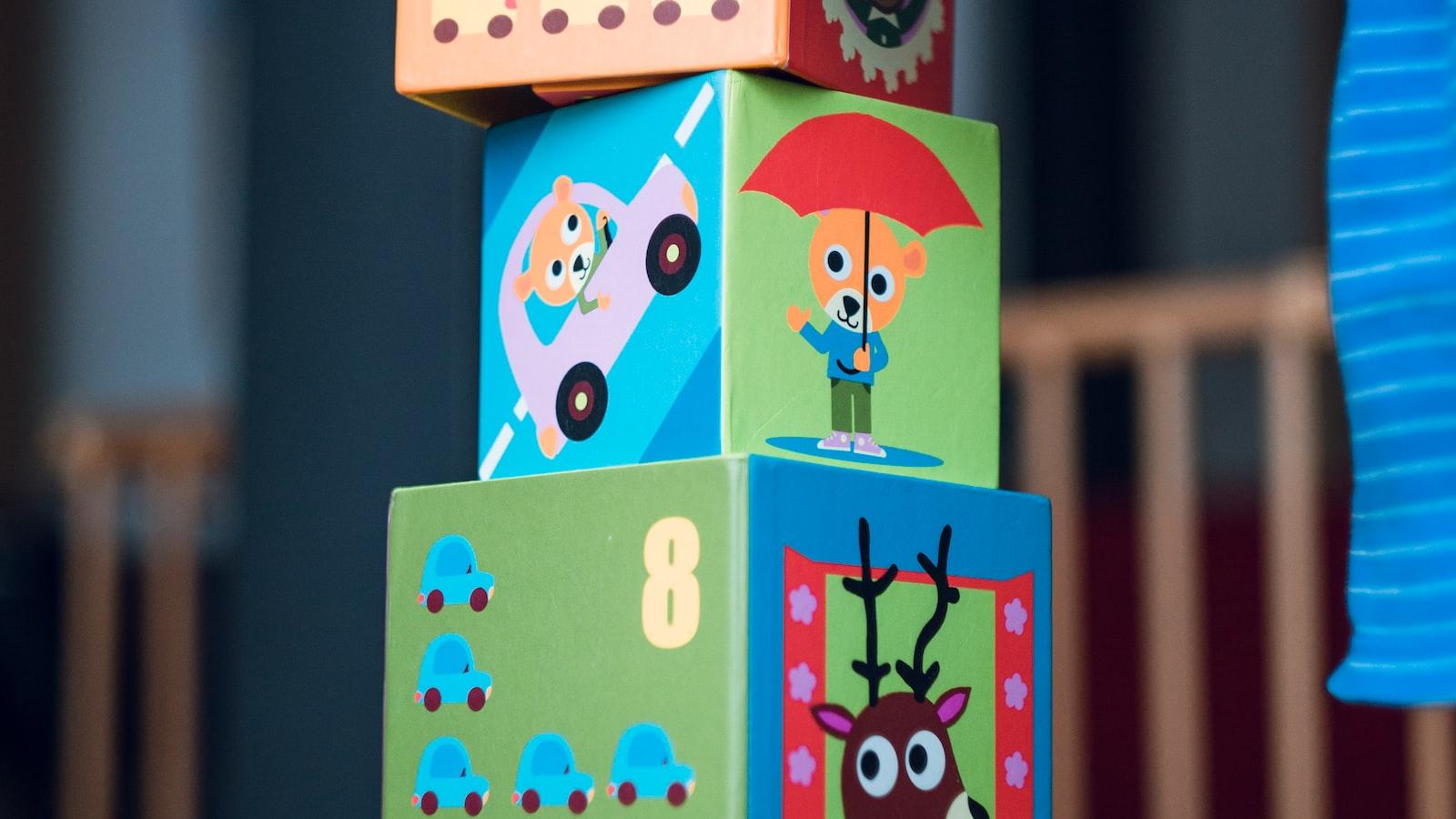Knowing if your baby needs glasses can be a difficult and confusing process. While infants and toddlers don’t necessarily have the same vision problems as adults, it is possible for them to experience vision problems at an early age. It is important to be aware of the signs that may indicate your baby needs glasses so that they can receive the care they need as soon as possible. In this article, we will discuss how to know if your baby needs glasses and when it is time to visit an eye doctor.If you think your baby needs glasses, it is important to schedule an eye exam with an optometrist or ophthalmologist. During the exam, the doctor will check for signs of nearsightedness, farsightedness, astigmatism and other vision problems. If the doctor finds a problem with your baby’s vision, a prescription for glasses may be recommended. Some common signs that could indicate that your baby needs glasses include: squinting or closing one eye to see better; holding objects close to their face; frequent eye rubbing; tilting their head to one side when looking at an object; and frequent headaches or dizziness.
Signs That an Infant May Need Glasses
It can be difficult to determine if an infant needs glasses, as they may not be able to communicate the issue. However, there are some signs that could indicate an issue with the baby’s vision. One sign is if the infant is squinting frequently. Squinting can be a sign that the child is having trouble focusing on objects or distinguishing between colors and shapes. Parents may also observe their baby tilting or turning their head when trying to look at something far away. This could be a sign of astigmatism, which can cause blurry vision and eye strain.
Parents should also look for any signs of excessive tearing, redness, or discharge from their baby’s eyes. These symptoms could indicate a more serious vision problem such as conjunctivitis or farsightedness, which can require glasses to correct. Additionally, another common sign that an infant may need glasses is if they do not seem to track objects with their eyes as they get older. If it seems like your infant’s eyes are not tracking objects in the same way as other babies their age, it might be time to have them seen by an ophthalmologist for a comprehensive eye exam.
It is important for parents to pay attention to these signs and seek medical attention if they think their baby needs glasses. Getting glasses at a young age can help prevent any further damage to the child’s vision and ensure that their development is not hindered by poor vision.
When Should You Take Your Baby for an Eye Exam?
It is important to have your baby’s eyes checked regularly by an optometrist or ophthalmologist. Most babies are born with healthy eyes, but some may have eye health issues that can be detected and treated early. The American Academy of Ophthalmology recommends that all babies receive a comprehensive eye exam at six months of age. This is to check for any vision issues or developing eye problems, and to detect any abnormalities that could affect a baby’s vision later in life.
A comprehensive eye exam should include a visual acuity test, which checks how well your baby can see objects at near and far distances. It will also include an evaluation of the inner and outer structures of the eye, as well as a refraction test to determine if corrective lenses are needed. In addition, the doctor may use imaging techniques such as retinal photography or ultrasound to look for any signs of retinal disease or other problems.
If your baby has any risk factors for vision problems, such as premature birth or family history, it is important to take them for an earlier eye exam. It is also a good idea to take them for regular check-ups every year until they reach school age. This will help ensure that any potential vision issues are detected and treated early on in life.
Common Symptoms that Suggest a Need for Baby Eyeglasses
Parents should be aware of the signs and symptoms that may indicate their baby needs eyeglasses. While some of these symptoms can be associated with other conditions, it is important to monitor them closely. If you notice any of the following symptoms, it is important to schedule an appointment with an optometrist or ophthalmologist for a comprehensive eye exam:
1. Squinting: When babies squint in order to focus on objects, it could be a sign that their eyesight is impaired.
2. Tilting Head: Tilting the head in order to focus better is another sign that vision may be impaired.
3. Fussing or Crying When Looking at Objects: Babies who fuss or cry when looking at objects may have difficulty seeing them accurately.
4. Turning Away from Objects: Babies who turn away from objects may not be able to see them clearly and thus are less interested in looking at them.
5. Not Following Moving Objects: If your baby does not follow moving objects with their eyes, it could be a sign of vision impairment.
6. Poor Hand-Eye Coordination: Poor hand-eye coordination can be a sign of decreased vision and should not be ignored.
7. Rubbing Eyes Frequently: Frequent eye rubbing can also indicate poor vision and should not go unnoticed by parents or caregivers.
It is vital that all parents are aware of these signs so they can get their babies the help they need as soon as possible if they suspect any issues with their baby’s eyesight. Early detection and treatment are key for ensuring your baby’s vision develops properly and they do not experience any long-term effects due to poor vision development during infancy or childhood stages of life
The Benefits of Early Detection of Vision Problems in Babies
The importance of early detection and treatment of vision problems in babies cannot be overstated. Babies are born with a wide range of vision problems, some mild and some more severe. Early detection and diagnosis are critical in order to ensure that the best possible outcome is achieved for the child. There are many benefits to early detection of vision problems in babies, including:
Early Treatment: One of the most important benefits of early detection is that it allows for early treatment. If a vision problem is detected at an early age, it can be addressed quickly and effectively before it has a chance to cause further damage or impair the child’s development.
Improved Quality of Life: Early diagnosis and treatment can also lead to improved quality of life for the baby. By addressing any potential vision problems quickly, parents can ensure their child has access to the best possible care and treatments available to maintain their vision health as they grow older.
Reduced Risk Of Injury: Early detection also reduces the risk of injury due to poor vision. Without proper treatment, a baby with vision problems may not be able to see objects clearly or accurately judge distances, which can increase their risk of accidents or injury due to falls or other incidents.
Improved Developmental Outcomes: Finally, early diagnosis and treatment can lead to improved developmental outcomes for babies with vision problems. By providing them with the resources they need to improve their visual acuity, parents can help ensure that their child reaches their full potential when it comes to learning and development.

Protecting Your Baby’s Vision
The health of your baby’s vision is of utmost importance. Taking steps to protect your baby’s vision can help ensure that their eyesight is healthy and functioning properly. Here are some tips to help you protect your baby’s vision:
Regular Eye Examinations
It is important to have your baby’s eyes examined regularly by an ophthalmologist or optometrist. These examinations can detect any early signs of vision problems, which can then be treated before they become more serious. Even if your baby does not show any signs of vision problems, regular check-ups are recommended for preventative care.
Eye Protection
When outdoors in sunny weather, it is important to make sure that your baby wears sunglasses with UV protection. This will help to shield their eyes from the sun’s harmful ultraviolet rays, which can cause damage to the eyes over time. It is also important to make sure that your baby wears protective eyewear when playing sports or engaging in any other activities that could result in objects hitting their face or eyes.
Good Nutrition and Hydration
Eating a balanced diet and staying hydrated are essential for keeping the eyes healthy and functioning properly. Make sure that your baby is getting enough vitamins A, C, and E as well as omega-3 fatty acids, which are all necessary for good eye health. Additionally, drinking plenty of water will help keep the eyes hydrated and functioning optimally.
Reduce Screen Time
Too much screen time can cause eye strain and fatigue, so it is important to limit the amount of time that your baby spends looking at screens such as televisions, phones, tablets, etc. If possible, try to encourage them to spend more time playing outside or engaging in other activities away from screens.
By taking these steps you can help ensure that your baby’s vision remains healthy for years to come.
Different Types of Tests Used to Diagnose Vision Problems in Infants
When diagnosing vision problems in infants, doctors may use a variety of tests to determine the severity and cause of the issue. These tests can help identify any issues that may be present and provide information on how to best treat them. The most common types of tests used to diagnose vision problems in infants include:
Ophthalmoscopy: This test involves examining the back of the eye using a special magnifying instrument called an ophthalmoscope. The doctor can see any abnormalities on the retina, which can indicate a vision problem.
Retinoscopy: This test allows physicians to measure refractive errors such as astigmatism, nearsightedness, or farsightedness. A retinoscope is used to shine a light at the back of the eye while the doctor observes how it is refracted off the retina. The doctor will then use this information to prescribe corrective lenses if necessary.
Visual Acuity Tests: These tests evaluate how well an infant can see by measuring their ability to identify objects from a distance or close up. The results are charted on a graph known as an acuity chart, which helps determine if there is any vision impairment present.
Color Vision Tests: These tests measure how well an infant can distinguish between different colors and hues. If color vision is impaired, it could be an indication of a more serious vision problem such as color blindness or cataracts.
Pupil Reaction Testing: Because infants cannot verbalize their vision issues, doctors may use pupil reaction testing to evaluate how their eyes respond to light stimulation. An abnormal response could indicate that there is some type of underlying issue that needs further investigation and treatment.
Overall, these tests are essential for diagnosing any potential vision problems in infants and helping them receive proper treatment and care so they can develop healthy eyesight for years to come.
Premature Birth
One of the most common risk factors for vision problems in babies is premature birth. Babies born prematurely are more likely to suffer from vision problems due to their immature development. Premature babies often have underdeveloped retinas, which can lead to a variety of vision issues such as blurred or double vision, poor depth perception, and difficulty focusing. Premature babies may also be at greater risk of developing a condition known as Retinopathy Of Prematurity (ROP), which can cause serious vision impairment.
Infections During Pregnancy
Maternal infections during pregnancy can also increase the risk of vision problems in babies. Bacterial and viral infections such as rubella, toxoplasmosis, and cytomegalovirus can all cause damage to the developing fetus and increase the likelihood of vision problems later on in life. Infections that affect the brain or spinal cord can also cause visual impairments in some cases.
Birth Defects
Birth defects are another common cause of vision problems in babies. Certain genetic conditions such as Down Syndrome or anencephaly can lead to eye abnormalities that can cause serious visual impairments. Congenital cataracts, glaucoma, and strabismus are other examples of birth defects that can lead to vision issues in infants and young children.
Low Birth Weight
Babies who are born with a low birth weight are more likely to develop various health complications, including eye problems. Low birth weight babies may suffer from retinal detachment or hemorrhages which can lead to permanent vision loss if not treated promptly. In addition, low birth weight babies may be at an increased risk of developing refractive errors such as nearsightedness or farsightedness later on in life.

Conclusion
It is important to be aware of the signs that may indicate a baby needs glasses. If a baby’s eyes are not tracking together, if they squint, blink or rub their eyes more than normal, or if they have crossed eyes, it is important to make an appointment with a doctor to discuss the possibility of glasses. It is also important to look out for any signs that a baby’s vision may be impaired. If a parent notices any of these signs, they should talk to the doctor and see if glasses are necessary for their baby.
Good vision is essential for development and it is important to make sure babies have all the help they need in order to see as clearly as possible. Taking steps such as making regular eye exams and talking to the doctor about any potential issues can help ensure that babies have the best start in life when it comes to their vision.




